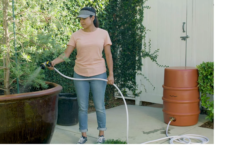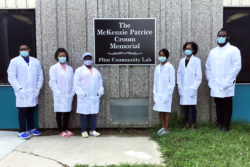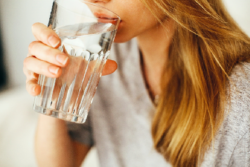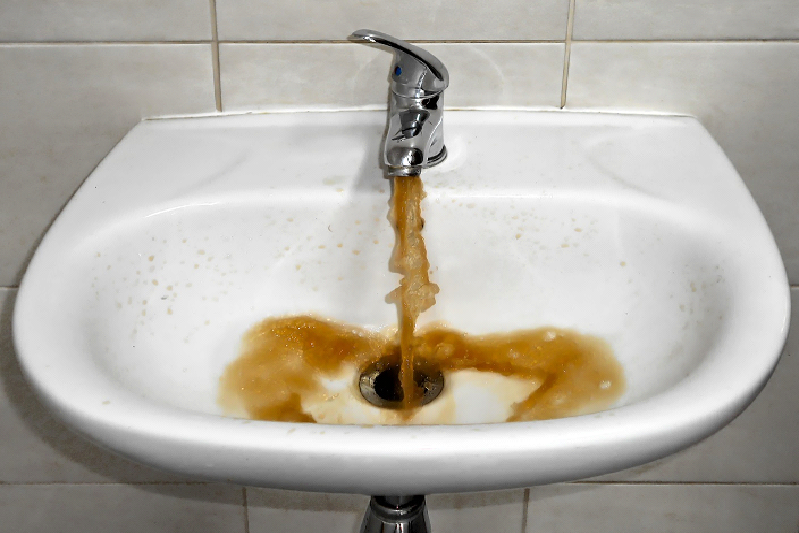IT Has Happened. What Have You Done to Prepare?
Did you know the majority of Americans have not prepared for emergencies? It’s true.
Ready Arlington explains, “Although 80% of Americans live in a county that has experienced a weather-related emergency in the past 8 years, less than 40% have actually developed an emergency plan and discussed it with their family.” Moreover, Bankrate found, “Nearly three in 10 (28 percent) U.S. adults have no emergency savings.”
There are many reasons that Americans do not plan for emergencies, including lack of finances or time. However, another reason that people fail to plan is that they suffer from normalcy bias. According to Psychology Today, “This bias refers to our tendency to expect that things will continue to occur in the future the way they have typically occurred in the past (to continue to be ‘normal’), which can lead us to underestimate both the likelihood of a disaster occurring and how bad the disaster is when it does occur.”
But the truth is – IT (whatever disaster you want to think of) can happen. How do we know? Because IT has happened before! Rather than speak out of fear, we feel that being aware of the types of water catastrophes that have already happened will empower us to make better preparedness choices.
We’ve rounded up 15 stories of recent water crises to show how important water preparedness is today and every day.
Millions of Texans Without Drinking Water After Winter Storm
Following the February 2021 winter storm, millions of Texans were without safe drinking water – specifically, 8.8 million people were still under boil water notices days later. Over 100,000 residents had no water at all. Read more
Possible Water Contamination at Arizona Air Force Base
Chemicals commonly found in firefighting foam were found inside drinking water near Luke Air Force Base in Phoenix. As a result of the discovery, the Arizona Department of Environmental Quality has taken action. In addition, residents in the area were told not to drink the contaminated water and bottled water was distributed. Read more
Tired of Waiting for the Government, Pastor Creates Hydro Panels to End Decades-Long Water Crisis
For twenty years, residents in Florence, South Carolina have dealt with one boil water advisory after another. Their notoriously unclean water and lack of government response led a pastor to raise funds to purchase solar hydro panels to make clean water from sunlight and air. Read more
On Top of Flooding, Kentucky Residents Don’t Have Drinking Water
During a recent flood in Kentucky, debris broke a water line. As a result, water was cut off to hundreds of homes. Those whose homes were already damaged by the flood couldn’t access water to clean their homes or drink. Read more
Hacker Poisons Florida Town’s Water Supply
Federal investigators recently discovered a hacker tried to poison the water in a Florida county remotely. The hacker opening tried to change the sodium hydroxide in the water supply from about 100 parts per million to more than 11,100 parts per million. Sodium hydroxide is the main ingredient in liquid drain cleaners. Read more
Austin Residents Forced to Shower in Apartment Pool After Winter Storm
Apartment residents in Austin, Texas went without water for over a month after the winter storm and went to extreme measures to get clean. Some showered in the apartment pool. Others got water when they opened the fire hydrants. Read more
Jackson, Mississippi Residents Reeling from Month of No Water
Residents in Jackson, Mississippi faced a month without water following winter weather. Unfortunately, officials claim come of the city’s water mains are as fragile as peanut brittle, which makes it possible more water issues are on the horizon. Read more
Kansas Man Indicted for Tampered with Public Water System
A man was recently indicted for tampering with the computer system controlling a Kansas city’s water system with the intention to harm. He faces up to 20 years in prison and a fine of up to $250,000. The FBI is investigating. Read more
Hydrant Crash Affected Supply in Emporia’s Elevated Storage Tanks
An early morning car collision including hitting and wrecking a fire hydrant in a Kansas town. The incident affected the city’s elevated storage tank capacity. Read more
600,000 Without Clean Water in Louisiana After Hurricane Laura
Hurricane Laura left more than 600,000 Louisiana residents without access to clean water for a week. Over 170,000 residents did not have access to water systems, the remaining 424,000 others had boil water advisories. Read more
Residents in Southern California Town Dealing with No Water after Earthquakes
After two earthquakes hit California in 2019, many communities were without water. This was due to multiple water main breaks. Read more
Contamination Fears After Australia Floods Cause Beach Closures and Water Restrictions
Recent flooding in Australia caused floodwater runoff containing sewage, chemicals, and debris to dump into major waterways. The poor water quality led to officials closing beaches and water restrictions. In previous years, sediments in the water backed up filtration systems and led to Brisbane almost running out of clean water. Read more
Contaminated Flood Water Risk Raises Concerns for Memphis Residents
A 2021 flood at an intersection in Memphis, Tennessee brought residents’ attention to sewer overflow. The city is already under a 2012 consent decree with the Environmental Protection Agency and the Tennessee Clean Waters Network to minimize the number of sanitary sewer overflows. Read more
Washington City Seeks State Funding to Replace Contaminated Water Source
The City of Airway Heights in Washington is working to address contamination issues and asking for funding since they discovered their city’s water supply was contaminated by dangerous chemicals found in fire extinguisher foam. Read more
Dover Schools’ Water Under Investigation
The New York Department of Health and Department of Environmental Conservation is currently evaluating what steps will need to be taken to clean the school’s water supply. Students and staff have been told not to drink the water or use it for cooking. Read more
What You Can Do Prepare for a Water Crisis
The best thing you can do to prepare for a possible water crisis is to store water in advance. The CDC recommends storing at least 1 gallon of water per person for 3 days. If you store bottled water, you will should to take heed of the expiration date as plastic bottles tent to break down over time. If you store your own water, you will need to replace the water every 3-6 months.
A better plan is to invest in a Waterfull Barrel. Our unique recirculating barrel stores 30 gallons of drinking water, which will sustain a family of 4 for 7 days. That’s 1 gallon of water per person per day. Plus, two gallons left over for your four-legged friends!
Barrel Feature: Not Just for Emergencies

Not only does the Waterfull Barrel store water for emergencies, but it also is useful for outdoor watering. Even if there is not an emergency, we recommend that you connect the Barrel to your outdoor spigot and hose and use it as often as possible. This ensures that water circulates through the Barrel on a regular basis.
To learn more about the Waterfull Barrel. Check out our FAQ page.
Positive Water News: Teens Solve Flint Water Problem

The devastating effects of the Flint water crisis led to a serious distrust for city water. Today, a group of high schoolers and college students are working at the Flint Community Water Lab to test the water in more than 20,000 Flint homes and share the results, in hopes of rebuilding the community’s trust in their water.
DIY: How to Test Water Quality and Safety

As the stories above show, many different events can cause a water crisis and make your drinking water unsafe. You don’t want to risk drinking contaminated water. The first way to test your water is to use your senses.
- Sight: Examine the appearance of the water. If it has particles or appears cloudy, it is unsafe.
- Smell: If the water has a strange or foul odor, don’t drink it.
- Taste: Only use your sense of taste as the last resort.
You can also purchase a home water test kit. Additionally, you can perform a DIY Water Quality Test.
- Purchase a basic soap, such as Castile, that is without dyes, perfumes, or deodorants. It should be 100% natural.
- Fill a clean, empty bottle with water (1/3 full).
- Add a few drops of the basic soap.
- Shake the bottle for a few seconds and observe.
- If you observe cloudy water and not many bubbles, the water is contaminated.
- If you observe clear water and many bubbles, the water is safe to drink.
Got a question? Email us at info@waterfull.com

